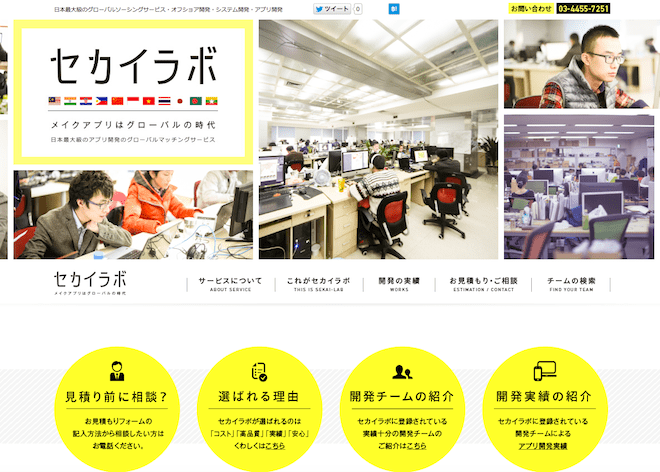
See the original article in Japanese
Viibar, startup which operates a crowdsourcing platform specializing in video production raised approximately 300 million yen in total ($3 million) from Globis Capital Partners and GREE Ventures. Further details were not disclosed.
Viibar was founded in April of 2013, with the aim of offering high-quality video for affordable prices, matching creators (like video directors and videographers) with clients. According to Viibar CEO, Yuta Kamisaka, a few hundred creators have been already registered on Viibar. Since last year, the company has utilized crowdsourcing to outsource work from a number of clients, including Rakuten and Mixi. The short video below was created for Mixi.
Kamisaka started his first career at a video-production company that makes TV and video ads. He gained some experience in video production, worked on the marketing team at Rakuten, and then he founded Viibar.
He participated Open Network Lab’s incubation program as part of its seventh batch, where Viibar won The Best Team Award on demo day. Shogo Kawada, a co-founder of DeNA and an angel investor, has also joined the team.
Currently Japan’s crowdsourcing platforms can be roughly divided into two types. One type has all processes completed within the platform – such as with Lancers and Crowdworks. The other type has the company more actively involved in the process, as with Mugenup or Kaizen. Viibar’s position is closer to the latter.
We spoke to Kamisaka about how the company handles video production.
ーーThe process is usually so complicated that it would be difficult leaving everything up to just the client and the creator. Mugenup solved the problem by dividing a whole process into small parts. How will Viibar take on the problem?
First, we ask clients to present an outline of the video. After signing a non-disclosure agreement, video directors on our platform who are interested in joining the project participate in the assignment and pitch their work. After creators are selected, we build a production platform on cloud.
On the website, clients can see profiles and past work of video directors and select one based on that information.

ーーIsn’t it difficult to work on a project when there is just direct communication between a client and a creator?
Right. So we also have product managers who help facilitate the process. A client’s expectation of quality is usually pretty high, and sometimes the creator has to do some processes again. By as we learn with every project, that will be reflected in our operations and systems.
ーーHow many members do you have on the team?
We have three part-time product managers. We expect one manager can support 10 to 20 clients.
The video market is growing fast, as YouTube’s business expands. There is great potential for Viibar to grow.
ーーWhat type of order do you get the most? And how much does it usually cost?
For animation videos, around 300,000 yen ($3000), and for live-action video, 600,000 yen ($6000) would be the most common price. The types of video are wide-rangng, but YouTube ads and short video ads for companies’ websites that introduce their product or service are increasing.

Videomaking has typically been a high-cost service. But with more video consumtion online, the need for affordable video clips is going up. On my own personal project dropout, almost 90 percent of the users watch the videos on their smartphone. This device shift is significant.
If it costs a few thousands dollars to make a video, it won’t be affordable for most people. But what if that price drops to a few hundreds dollars? Then it could drive an expansion of quality video media. To that end, I think there’s much potential to be found in video-crowdsourcing.



































